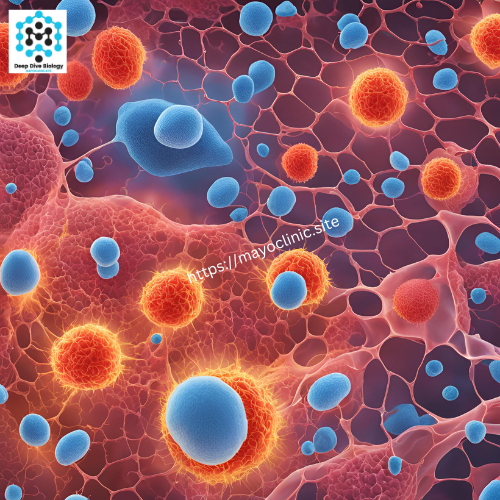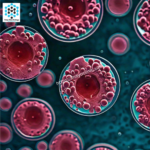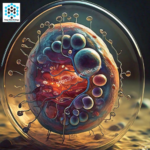Understanding Cellular Transport Mechanisms: Active Cell Transport
We looked at diffusion for the movement of gases and osmosis for the movement of water. They were things that could easily move from a high concentration to a low concentration. That makes sense. So, what is active transport for?
To understand how cells function, it’s crucial to grasp how substances move in and out of them. Let’s break down three primary mechanisms: diffusion, osmosis, and active cell transport.
Diffusion and Osmosis: The Easy Movers
Diffusion and osmosis are natural, energy-efficient processes. They rely on the concept of moving substances from areas of high concentration to areas of low concentration, aligning with the concentration gradient. This is a bit like sliding downhill; no extra effort is needed.
- Diffusion involves the movement of gases and other small molecules. For example, oxygen entering our cells from the bloodstream happens through diffusion.
- Osmosis is a clear-cut category of diffusion involve water molecules. For instance, water moving into plant roots from the soil is driven by osmosis.
Active Cell Transport: The Energy-Intensive Process
Now, let’s delve into Active cell transport. As the name suggests, this process is “active,” meaning it requires energy.
Unlike diffusion and osmosis, active transport moves molecules from a low concentration to a high concentration, against the concentration gradient. This is akin to climbing uphill; you need extra effort, or in biological terms, energy.
Active cell transport is carried out by specialized protein carriers within the cell membrane. These protein carriers have specific binding sites tailored for the exact molecules they are meant to transport. Here’s how it works:
- The substance binds to the protein carrier on the low concentration side of the cell membrane.
- Using energy derived from respiration, the protein carrier changes shape and releases the substance on the other side of the membrane, where the concentration is already high.
Why Do Need Active Cells Transport?
Active transport is essential for several cellular functions:
- Nutrient Absorption: Root hair cells in plants use active transport to absorb mineral ions from the soil, which are typically in low concentration in the surrounding environment.
- Reabsorption in Kidneys: In our kidneys, active transport helps retain essential substances such as glucose and sodium ions, ensuring they aren’t lost in urine.
Cells engaged in significant active transport activities often have numerous mitochondria. Mitochondria are the cell’s powerhouses, providing the necessary energy in the form of ATP (adenosine triphosphate) to drive these processes.
Recap and Comparison
To sum up, we have three primary ways cells move substances:
- Diffusion: Movement from high to low concentration without energy (like sliding down a slide).
- Osmosis: A special case of diffusion for water molecules, also energy-free.
- Active Transport: Movement from low to high concentration requiring energy (like climbing a ladder).
By understanding these mechanisms, we gain insight into how cells absorb nutrients, expel waste, and maintain homeostasis. This knowledge is fundamental to comprehending broader biological processes and how life sustains itself at the cellular level.
Conclusion
In conclusion, understanding the mechanisms of diffusion, osmosis, and active transport is vital for comprehending how cells maintain balance and function efficiently.
Diffusion and osmosis allow for the passive movement of substances along the concentration gradient, requiring no energy and operating like a downhill slide. In contrast, active transport is the uphill climb, demanding energy to move substances against the concentration gradient.
These processes illustrate the remarkable adaptability of cells in managing their internal and external environments. Whether it’s plants absorbing essential minerals from the soil or kidneys retaining vital nutrients, the efficient operation of these transport mechanisms is essential for the survival of organisms.
By mastering these concepts, we gain a deeper appreciation of the intricate and dynamic nature of cellular life.
FAQs
1. What is the difference between diffusion and osmosis?
- Diffusion involves the action of gases or short molecules from an field of high concentration to an field of low concentration, without the demand for power.
- Osmosis is a type of diffusion specifically for water molecules, moving through a semi-permeable membrane from a region of high water concentration to a region of low water concentration.
2. Why does active transport require energy?
Active transport requires energy because it moves substances against their concentration gradient, from low concentration to high concentration. This process is analogous to climbing uphill, necessitating extra effort, which is provided by energy in the form of ATP.
3. What role do protein carriers play in active transport?
Protein carriers in the cell membrane have specific binding sites for the molecules they transport. They use energy from respiration to change shape and move these molecules across the membrane from areas of low concentration to high concentration.
4. How do root hair cells in plants use active transport?
Foundation hair cells use active cell transport to take in mineral ions from the clay. Even though these ions are in low concentration in the soil, active transport allows the cells to take them in, concentrating them inside the plant where they are needed for growth and development.
5. Why do cells that perform a lot of active transport have many mitochondria?
Cells that perform significant amounts of active transport need a lot of energy. Mitochondria are the powerhouses of the cell, producing ATP, the energy currency required for active transport. Therefore, these cells have many mitochondria to meet their high energy demands.
6. Can you give an example of active transport in the human body?
One example of active transport in the human body is in the kidneys, where cells reabsorb vital substances like glucose and sodium ions from urine back into the blood. This process ensures that essential nutrients are not lost and helps maintain homeostasis.
7. How do diffusion and active transport differ in terms of energy usage?
- Diffusion does not lack power as it moves item downward the concentration gradient.
- Active cell transport requires energy because it moves substances against the concentration gradient, from low to high concentration.


